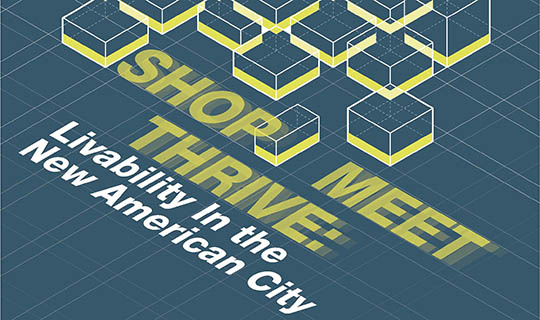Submission: November 15, 2017
Registration: November 15, 2017
Language: English
Location: Washington D.C., USA
Prizes: Please see details below
Type: Idea
Cities around the world are growing at an unprecedented rate, and for the first time in recent history represent the preferred place for people to live. Urbanization has historically aided millions to escape hardship through increased employment opportunities, better education and healthcare, large scale public investments, and access to improved infrastructure and services. The city has been the ideal for heightened livability for people worldwide.
These extraordinary opportunities have also propagated unanticipated pressure on the livability of cities that remains pervasive today. US cities are faced with new 21st century challenges aimed at corroding three interwoven drivers of livability: equity, safety, and affordability. These drivers have been the pillars of American cities, and are now being dangerously tested by the increasing pressures of urbanization.
How will retail fit into the livable city of the future?
“[The city’s] order is all composed of movement and change, and although it is life, not art, we may fancifully call it the art form of the city and liken it to the dance — … an intricate ballet in which the individual dancers and ensembles all have distinctive parts which miraculously reinforce each other and compose an orderly whole. The ballet of the good city… is always replete with new improvisations.”
Jane Jacobs, The Death and Life of Great American Cities
Traditionally, local main streets with corner stores, community restaurants, and neighborhood shops were the suppliers of energy to sustain this civic ballet. Rapid suburbanization helped re-choreograph and focus this activity into shopping malls surrounded by sprawling roadways. Today’s trend is a return to urban living.
Expanding urban centers and urbanized suburbs are different now, characterized by changing demographics, values and rapid adoption of new technology in all aspects of life, from mobility to e-commerce, augmented reality in communications – in short, the amplified smart city.
Goods, services and sustenance remain at the center of urban life, and a measure of the livable city – exemplifying issues of equity, safety and affordability. Income inequality has risen 75% in urban centers over the past 20 years. Affordability at all levels from housing to food is constantly challenged. While urban crime in the US has steadily decreased over the same twenty years, recent studies also show that city living seems to increase sensitivity to social stress. Safety takes on a new dimension.
How will retail continue to be a part of the social life of cities, redefining its relation to streetscapes and the public realm? How can, and will, this change the face of retail, and thus, our communities?








